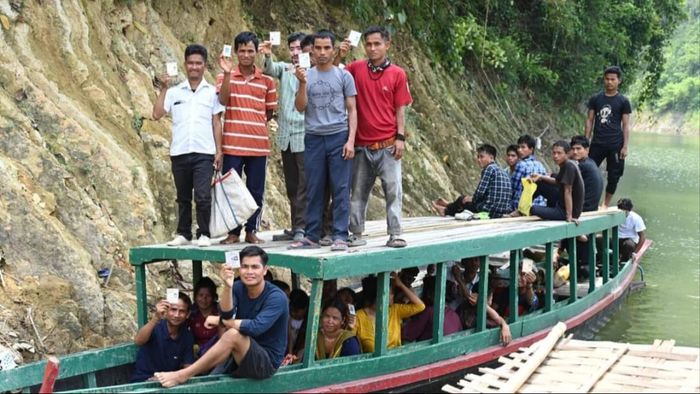Why Tripura is witnessing higher voter turnout
Tripura has recently been in the spotlight due to its back-to-back elections, including the 60-seat assembly election in 2023 and the Lok Sabha election.

- Apr 26, 2024,
- Updated Apr 26, 2024, 11:30 PM IST
Tripura has recently been in the spotlight due to its back-to-back elections, including the 60-seat assembly election in 2023 and the Lok Sabha election.
While the high voter turnout might seem surprising to many, Tripura has a rich history of active participation in the electoral process.
The journey of electoral democracy in Tripura dates back to 1952 when the first Lok Sabha election was held. Subsequently, in 1967, the state witnessed its first legislative assembly poll, with the Indian National Congress emerging victorious and Sachindra Lal Singh becoming the inaugural Chief Minister.
Over the years, Tripura has consistently boasted a high voter turnout, a phenomenon attributed to various factors. Political observers often credit the Communist Party of India (Marxist) (CPIM) for fostering a culture of political consciousness among the populace. However, there's another side to the story, with allegations of widespread rigging and booth capturing tarnishing the electoral process and potentially inflating voter turnout figures.
Also Read: Lok Sabha Elections 2024: Tripura records 79.55 per cent voter turnout by 5 PM
Despite these challenges, the people of Tripura have demonstrated a steadfast commitment to exercising their franchise since the inception of elections in the region. The former Left Front government, in particular, took pride in its efforts to promote political awareness among the citizens, fostering a sense of civic duty and engagement.
It has also been observed that since early morning there has been a massive crowd in line in front of the polling stations, which is not new.
The recent elections have once again highlighted Tripura's political vibrancy, with voter turnout remaining a focal point of discussion. While this year's turnout may be slightly lower than the previous election, which saw a remarkable 82% participation rate, it's essential to recognize that high voter turnout is not a new phenomenon in Tripura.
A political observer, who preferred to remain anonymous, stated, 'We are very much conscious about our political landscape. This is one of the major reasons. Since the inception of the state, the fight has been between CPIM and Congress. CPIM is a political party that depends on the organization, and Congress has also become a party not cadre-based, but to break the cadre, they have built their party. Even those who migrated from Bangladesh to Tripura used to be scared of indigenous people, and CPIM was known as the tribal party. For that reason, both tribal and non-tribal people used to cast their votes.'"
Despite the challenges and controversies surrounding the electoral process, the people of Tripura continue to uphold their legacy of active political participation, making their voices heard through the ballot box.